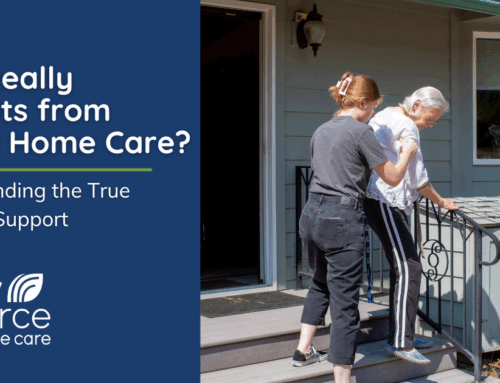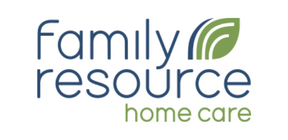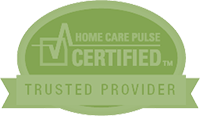It’s on every channel. Every screen. Every lip and every mind. The current crisis, aka coronavirus, has swept the world and potentially changed the way we work and live forever. Given my personal dedication to concerning myself with all things “home care,” I’ve been gathering as much information as possible on how this virus has affected our industry. I’ve also started examining the possible effects that may remain for home care after the proverbial viral dust has settled.
BETTER THAN MOST
It seems that every conversation nowadays begins with something like, “How is your family, are you healthy?”…[pause & reciprocate]…then “how’s your work?” This last question provokes some sense of guilt. Has home care been affected? Oh yes, there’s no question that, like all businesses, the coronavirus has taken a toll on us. Afterall, we serve immune-compromised seniors, the most susceptible population for the disease. However, we aren’t closing our doors or laying off staff in droves or putting everything on hold like so many businesses are being forced to do. We are far better off than clothing retailers or food service businesses that are truly struggling through this crisis.
In fact, home care is the safest way for seniors and others to receive care as it limits potential exposure to the virus. It’s long been known that people acquire fewer infections and disease, are happier, and recover better from illness in their own homes. Those who receive home care also experience less loneliness, have fewer falls, hospitalizations, medication errors, and exacerbation of chronic conditions. Plus they fall prey to fewer scammers and can remain more positively engaged in life by continuing activities that fulfill them but require a little extra help.
My concern goes out to our community facilities where sometimes hundreds of seniors live together, making them susceptible to waves of illness such as norovirus (stomach flu), colds, flus, and now the coronavirus. Our colleagues in these facility settings are pressed now to provide extreme measures to help ensure safety of their residents. Knowing how many businesses and industries are struggling just a few weeks into this crisis, I feel blessed to be in home care which is highly likely to weather the storm.
BETTER THAN MOST…AGAIN
So, what about the other side of this crisis? My prediction is that home care will emerge stronger with even greater emphasis and focus on what we’ve been promoting all along – that those who have access to home care remain healthier, reduce the burden on our health care systems, and remain happily at home longer. Despite this long list of benefits, we continue to be a service that few people become aware of until they are in the moment of crisis. As our rapidly aging population increasingly experiences the need for long term care, familiarity with and awareness of home care’s value proposition is rising. In particular, the awareness and desire for live-in care has increased tremendously as a result of the coronavirus crisis.
Live-in care is truly the safest option for both the client and caregiver during a pandemic such as this, given that exposure to other people can be more limited. Yet, the vast majority of clients in home care don’t need around-the-clock care and they can benefit from just a handful of support hours per week that, on average, save them more than half the cost of living in a congregate facility. Given this affordability (and the ability to scale up hours over time as the need arises) and the fact that most want to age in place, the future remains very bright for home care.
PPE & A SEAT AT THE TABLE
One headline from this crisis has rung true for home care as well: the shortage of personal protective equipment (PPE). Family Resource fared better than many thanks to a supply of over 1,000 masks and thousands more gloves, but most of our industry was unprepared as masks aren’t commonly needed for regular home care services.
In the future, I predict many agencies will seek to ensure they have an emergency supply of PPE in the event of another pandemic. Interestingly, home care’s recent efforts to be included on the “lists” for PPE has resulted in conversations around the country and with our government agencies and elected officials about the value and role of home care. Over the past few weeks, I’ve personally spoken to legislators and regulators to help increase the awareness about home care’s vital role in the healthcare continuum. Though born out of coronavirus crisis, I’m hopeful this burgeoning awareness leads to home care taking a more permanent place at the healthcare table going forward.
ENTRY LEVEL LABOR FAVOR
Lastly, I predict the traditional labor force that home care competes with may fare worse against us in the near term. Food service, retail, and hospitality are all feeling the primary brunt of layoffs and reduction in hours in the early phases of this crisis. I don’t revel in the economic outcomes for these employers and individuals as a result of this pandemic. I do, however, believe job stability emerges as a value proposition to our prospective employees, another complement to our purpose-driven, meaningful, and heartwarming work.
We’ll continue to keep a watchful eye on the horizon and ensure we are better prepared for other possible threats to our industry, but, as an essential service, we feel confident in our ability to not take on too much water during this current storm. We will prove that even the biggest crisis is no match for our ability to continue providing top-quality care for thousands of families, keeping their loved ones safe and healthy, at home.






